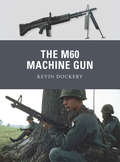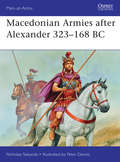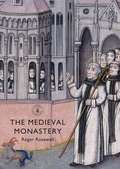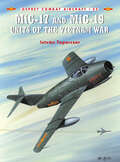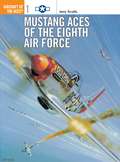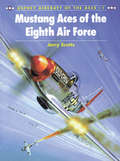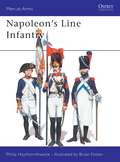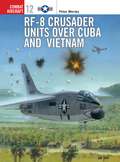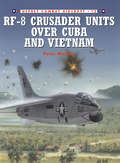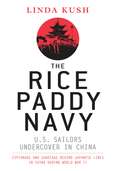- Table View
- List View
The M60 Machine Gun (Weapon)
by Kevin Dockery Mark Stacey Alan GillilandThe US M60 General Purpose Machine Gun, known as "the Pig,†? was developed in the years after World War II from two revolutionary German designs. Adopted in 1957, the M60 came into its own in the jungles, hamlets, and city streets of Southeast Asia during the Vietnam War. "Humping the Pig†? became common in US military squads, with at least one soldier equipped with an M60 and every squad member carrying ammunition for it. The M60 design transformed infantry tactics as squads took advantage of the immediate volume of fire offered by the design. Although it has now been replaced by the M240 series of weapons in US infantry and mechanized units, the M60 is still in common use with the US armed forces. Meanwhile, its iconic status has been assured by its frequent appearance in many popular films and television shows, from Full Metal Jacket to The A Team. Featuring specially commissioned full-color artwork, this is the full story of the M60, the innovative squad base-of-fire weapon that has equipped the US military from the jungles of Vietnam to the deserts of Iraq.
The M60 Machine Gun (Weapon #20)
by Kevin Dockery Mark Stacey Alan GillilandThe US M60 General Purpose Machine Gun, known as "the Pig,†? was developed in the years after World War II from two revolutionary German designs. Adopted in 1957, the M60 came into its own in the jungles, hamlets, and city streets of Southeast Asia during the Vietnam War. "Humping the Pig†? became common in US military squads, with at least one soldier equipped with an M60 and every squad member carrying ammunition for it. The M60 design transformed infantry tactics as squads took advantage of the immediate volume of fire offered by the design. Although it has now been replaced by the M240 series of weapons in US infantry and mechanized units, the M60 is still in common use with the US armed forces. Meanwhile, its iconic status has been assured by its frequent appearance in many popular films and television shows, from Full Metal Jacket to The A Team. Featuring specially commissioned full-color artwork, this is the full story of the M60, the innovative squad base-of-fire weapon that has equipped the US military from the jungles of Vietnam to the deserts of Iraq.
Macedonian Armies after Alexander 323–168 BC (Men-at-Arms)
by Peter Dennis Nicholas SekundaThe death of Alexander the Great in 323 BC threw the Macedonians into confusion; there was no capable heir, and no clear successor among the senior figures in Alexander's circle. Initial attempts to preserve the unity of Alexander's conquests gave way to a period of bloody and prolonged warfare. For well over a century the largely mercenary armies of Alexander's successors imposed their influence over the whole of the Near East, while absorbing local military practices. After Rome's decisive defeat of Carthage in 202 BC, Macedonia came under increasing pressure from the Romans. Three wars between the two powers culminated in the Roman victory at Pydna in 168 BC, which laid Alexander's empire to rest and established Roman hegemony in the Near East. Drawing upon a wide array of archaeological and written sources and written by a noted authority on the Hellenistic period, this survey of the organization, battle history and appearance of the armies of Alexander's successors is lavishly illustrated with specially commissioned full-colour artwork.
Macedonian Armies after Alexander 323–168 BC (Men-at-Arms)
by Peter Dennis Nicholas SekundaThe death of Alexander the Great in 323 BC threw the Macedonians into confusion; there was no capable heir, and no clear successor among the senior figures in Alexander's circle. Initial attempts to preserve the unity of Alexander's conquests gave way to a period of bloody and prolonged warfare. For well over a century the largely mercenary armies of Alexander's successors imposed their influence over the whole of the Near East, while absorbing local military practices. After Rome's decisive defeat of Carthage in 202 BC, Macedonia came under increasing pressure from the Romans. Three wars between the two powers culminated in the Roman victory at Pydna in 168 BC, which laid Alexander's empire to rest and established Roman hegemony in the Near East. Drawing upon a wide array of archaeological and written sources and written by a noted authority on the Hellenistic period, this survey of the organization, battle history and appearance of the armies of Alexander's successors is lavishly illustrated with specially commissioned full-colour artwork.
The Medieval Monastery (Shire Library)
by Roger RosewellMonasteries are among the most intriguing and enduring symbols of Britain's medieval heritage. Simultaneously places of prayer and spirituality, power and charity, learning and invention, they survive today as haunting ruins, great houses and as some of our most important cathedrals and churches. This book examines the growth of monasticism and the different orders of monks; the architecture and administration of monasteries; the daily life of monks and nuns; the art of monasteries and their libraries; their role in caring for the poor and sick; their power and wealth; their decline and suppression; and their ruin and rescue. With beautiful photographs, it illustrates some of Britain's finest surviving monastic buildings such as the cloisters of Gloucester Cathedral and the awe-inspiring ruins of Rievaulx Abbey in North Yorkshire.
MiG-17 and MiG-19 Units of the Vietnam War (Combat Aircraft)
by Iain Wyllie István ToperczerThe erstwhile enemy of the USAF and US Navy during the nine years of American involvement in the Vietnam War, the Vietnamese Peoples' Air Force (VPAF) quickly grew from an ill-organised rabble of poorly trained pilots flying antiquated communist aircraft into a highly effective fighting force that more than held its own over the skies of North Vietnam. Flying Soviet fighters like the MiG-17, and -19, the VPAF produced over a dozen aces, whilst the Americans managed just two pilots and three navigators in the same period.
MiG-17 and MiG-19 Units of the Vietnam War (Combat Aircraft)
by István ToperczerThe erstwhile enemy of the USAF and US Navy during the nine years of American involvement in the Vietnam War, the Vietnamese Peoples' Air Force (VPAF) quickly grew from an ill-organised rabble of poorly trained pilots flying antiquated communist aircraft into a highly effective fighting force that more than held its own over the skies of North Vietnam. Flying Soviet fighters like the MiG-17, and -19, the VPAF produced over a dozen aces, whilst the Americans managed just two pilots and three navigators in the same period.
MiG-21 Units of the Vietnam War (Combat Aircraft)
by Mark Styling István ToperczerHaving honed their piloting skills on the subsonic MiG-17 and transonic MiG-19, the Vietnamese Peoples' Air Force (VPAF) received their first examples of the legendary MiG-21 supersonic fighter in 1966. Soon thrown into combat over North Vietnam, the guided-missile equipped MiG-21 proved a deadly opponent for the USAF, Navy and Marine Corps crews striking at targets deep into communist territory. Most of the VPAF's 12+ aces scored their bulk of their kills in the MiG-21, which was then the best fighter produced by Russia's premier fast jet manufacturer, Mikoyan Gurevich. Well over 200 MiG-21s were supplied to the VPAF, and the numerous models and the schemes they wore are chronicled in great detail in this unique volume.
MiG-21 Units of the Vietnam War (Combat Aircraft #29)
by Mark Styling István ToperczerHaving honed their piloting skills on the subsonic MiG-17 and transonic MiG-19, the Vietnamese Peoples' Air Force (VPAF) received their first examples of the legendary MiG-21 supersonic fighter in 1966. Soon thrown into combat over North Vietnam, the guided-missile equipped MiG-21 proved a deadly opponent for the USAF, Navy and Marine Corps crews striking at targets deep into communist territory. Most of the VPAF's 12+ aces scored their bulk of their kills in the MiG-21, which was then the best fighter produced by Russia's premier fast jet manufacturer, Mikoyan Gurevich. Well over 200 MiG-21s were supplied to the VPAF, and the numerous models and the schemes they wore are chronicled in great detail in this unique volume.
Modelling Luftwaffe Jets and Wonder Weapons
by Brett GreenWhile the Allies largely relied on mass production to help them win World War II, Germany put a great deal of their limited resources into new technologies and wonder weapons. In addition to these tangible assets, which were used with varying degrees of success, the drawing boards of Germany were littered with dozens of advanced designs that never reached the prototype or production stages. Many of these operational and paper projects advanced the pace and influenced the direction of aircraft development in the decades following World War II, with many of the German engineers responsible for these innovations seamlessly continuing their roles in the United States and the USSR. Modellers have had a long fascination for the Luftwaffe's jet arsenal and secret weapons of fact and fiction and this new Osprey Masterclass will explore the Luftwaffe jets and rocket planes that saw service at the end of World War II.
Mustang Aces of the Eighth Air Force (Aircraft of the Aces)
by Jerry Scutts Chris DaveyUnquestionably the best American fighter of World War 2, the North American P-51 Mustang served in large numbers with the USAAF's Eighth Air Force from late 1943 until VE Day, and was the mount of most aces in-theatre. Charged with the responsibility of escorting huge formations of B-17 Flying Fortress and B-24 Liberator bombers on daylight raids deep into Germany, the P-51 pilots of the various fighter groups within the 'Mighty Eighth' went head to head with the cream of the Luftwaffe's fighter squadrons for control of the skies over the Third Reich. Aircraft of the Aces 1, 19 and 24 are also available in a single volume as 'Aces of the Mighty Eighth'.
Mustang Aces of the Eighth Air Force (Aircraft of the Aces)
by Jerry Scutts Chris DaveyUnquestionably the best American fighter of World War 2, the North American P-51 Mustang served in large numbers with the USAAF's Eighth Air Force from late 1943 until VE Day, and was the mount of most aces in-theatre. Charged with the responsibility of escorting huge formations of B-17 Flying Fortress and B-24 Liberator bombers on daylight raids deep into Germany, the P-51 pilots of the various fighter groups within the 'Mighty Eighth' went head to head with the cream of the Luftwaffe's fighter squadrons for control of the skies over the Third Reich. Aircraft of the Aces 1, 19 and 24 are also available in a single volume as 'Aces of the Mighty Eighth'.
Napoleon's Line Infantry (Men-at-Arms)
by Bryan Fosten Philip HaythornthwaiteNapoleon's line infantry was founded upon that of the Ancien Régime. A total re-organisation began on 1 January 1791 with the abolition of the old regimental titles, and over the next two years an increasing number of conscript and volunteer battalions were formed. Their quality varied from the proficiency of the early National Guard regiments to the untrained and ill-equipped rabble of the levée. To combine the discipline and steadiness of the regular army with the revolutionary fervour of the new army, the Amalgame was decreed on 21 February; by this measure each regular battalion became the nucleus of a new Demi-Brigade.
Napoleon's Line Infantry (Men-at-Arms #141)
by Bryan Fosten Philip HaythornthwaiteNapoleon's line infantry was founded upon that of the Ancien Régime. A total re-organisation began on 1 January 1791 with the abolition of the old regimental titles, and over the next two years an increasing number of conscript and volunteer battalions were formed. Their quality varied from the proficiency of the early National Guard regiments to the untrained and ill-equipped rabble of the levée. To combine the discipline and steadiness of the regular army with the revolutionary fervour of the new army, the Amalgame was decreed on 21 February; by this measure each regular battalion became the nucleus of a new Demi-Brigade.
P-40 Warhawk vs Ki-43 Oscar: China 1944–45 (Duel)
by Jim Laurier Carl MolesworthKnown for the distinctive 'sharkmouth' decoration on their noses, P-40 fighters first saw combat in China during World War II. Their most common adversary was the Japanese Nakajima Ki-43, nicknamed 'Oscar.' Carl Molesworth describes and explains the design and development of these two foes, the products of two vastly different philosophies of fighter design. The P-40 was heavily armed and sturdy with armour protection and self-sealing fuel tanks, but paid for this with the loss of speed and a sluggish performance at altitude. The Ki-43 was a rapier to the battleaxe P-40 and the Ki-43 was immensely nimble, though with less firepower and durability. This book examines these two different fighters, and the pilots who flew them over China, with an action-packed text, rare photographs and digital artwork.
P-40 Warhawk vs Ki-43 Oscar: China 1944–45 (Duel)
by Jim Laurier Carl MolesworthKnown for the distinctive 'sharkmouth' decoration on their noses, P-40 fighters first saw combat in China during World War II. Their most common adversary was the Japanese Nakajima Ki-43, nicknamed 'Oscar.' Carl Molesworth describes and explains the design and development of these two foes, the products of two vastly different philosophies of fighter design. The P-40 was heavily armed and sturdy with armour protection and self-sealing fuel tanks, but paid for this with the loss of speed and a sluggish performance at altitude. The Ki-43 was a rapier to the battleaxe P-40 and the Ki-43 was immensely nimble, though with less firepower and durability. This book examines these two different fighters, and the pilots who flew them over China, with an action-packed text, rare photographs and digital artwork.
P-61 Black Widow Units of World War 2 (Combat Aircraft)
by Mark Styling Warren ThompsonThe first aircraft to be purposely designed as a radar-equipped nightfigher, Northrop's P-61 Black Widow was heavily influenced by early RAF combat experience with radar-equipped aircraft in 1940/41. Built essentially around the bulky Radiation Laboratory SCR-720 radar, which was mounted in the aircraft's nose, the P-61 proved to be the largest fighter ever produced for frontline service by the USAAF. Twin-engined and twin-boomed, the Black Widow was armed with a dorsal barbette of four 0.50-in Browning machine guns and two ventrally-mounted 20 mm cannon. This volume features all the frontline users of the mighty P-61, and includes many first-hand accounts from pilots and gunners who saw action in the Pacific, Mediterranean and Western Europe.
P-61 Black Widow Units of World War 2 (Combat Aircraft #8)
by Mark Styling Warren ThompsonThe first aircraft to be purposely designed as a radar-equipped nightfigher, Northrop's P-61 Black Widow was heavily influenced by early RAF combat experience with radar-equipped aircraft in 1940/41. Built essentially around the bulky Radiation Laboratory SCR-720 radar, which was mounted in the aircraft's nose, the P-61 proved to be the largest fighter ever produced for frontline service by the USAAF. Twin-engined and twin-boomed, the Black Widow was armed with a dorsal barbette of four 0.50-in Browning machine guns and two ventrally-mounted 20 mm cannon. This volume features all the frontline users of the mighty P-61, and includes many first-hand accounts from pilots and gunners who saw action in the Pacific, Mediterranean and Western Europe.
The Portuguese in the Age of Discovery c.1340–1665 (Men-at-Arms)
by David Nicolle Gerry EmbletonFrom humble beginnings, in the course of three centuries the Portuguese built the world's first truly global empire, stretching from modern Brazil to sub-Saharan Africa and from India to the East Indies (Indonesia). Portugal had established its present-day borders by 1300 and the following century saw extensive warfare that confirmed Portugal's independence and allowed it to aspire to maritime expansion, sponsored by monarchs such as Prince Henry the Navigator. During this nearly 300-year period, the Portuguese fought alongside other Iberian forces against the Moors of Andalusia; with English help successfully repelled a Castilian invasion (1385); fought the Moors in Morocco, and Africans, the Ottoman Turks, and the Spanish in colonial competition. The colourful and exotic Portuguese forces that prevailed in these battles on land and sea are the subject of this book.
RF-8 Crusader Units over Cuba and Vietnam (Combat Aircraft)
by Tom Tullis Peter MerskyAlthough the Crusader was built first and foremost as a Navy interceptor, as has often been the tradition with US fighters, a photo-reconnaissance variant was also produced by Vought. The photo-bird's first operational test came in the autumn of 1962 when its overflights of Cuba alerted the world to the likely presence of medium-range ballistic missiles on the Caribbean island. The recce Crusader's next action came during the long years of the Vietnam War. This volume is the second of two in the Combat Aircraft series devoted to the Crusader, the first title (again by Peter Mersky) having covered the F-8 fighter variants, and their MiG-killing exploits, during the Vietnam War.
RF-8 Crusader Units over Cuba and Vietnam (Combat Aircraft #12)
by Tom Tullis Peter MerskyAlthough the Crusader was built first and foremost as a Navy interceptor, as has often been the tradition with US fighters, a photo-reconnaissance variant was also produced by Vought. The photo-bird's first operational test came in the autumn of 1962 when its overflights of Cuba alerted the world to the likely presence of medium-range ballistic missiles on the Caribbean island. The recce Crusader's next action came during the long years of the Vietnam War. This volume is the second of two in the Combat Aircraft series devoted to the Crusader, the first title (again by Peter Mersky) having covered the F-8 fighter variants, and their MiG-killing exploits, during the Vietnam War.
The Rice Paddy Navy: U.S. Sailors Undercover in China
by Linda KushAfter the attack on Pearl Harbor, the U.S. Navy knew it would need vital information from the Pacific. After a meeting and a handshake agreement with Chiang Kai-shek, the Sino-American Cooperative Organization was born. This top-secret network worked hand in hand with the Nationalist Chinese to fight the Japanese occupation of China while it intercepted Japanese code, laid mines, and trained Chinese peasants in guerrilla warfare. Its work supplied critical information to the U.S. and contributed to the felling of more than 70,000 Japanese – while losing only five of their own men. SACO – “the rice paddy navy” – was one of the best-kept secrets of the war. Linda Kush uncovers the military accomplishments and political wrangling that colored one of the most successful – and little known – efforts of World War II.
Rumanian Aces of World War 2 (Aircraft of the Aces)
by John Weal Dénes BérnadFirst seeing action in the wake of the German invasion of the USSR in June 1941, the Royal Rumanian Air Force had been allied to the Luftwaffe since the Romanian government signed a Tripartite Pact with Germany and Italy in November 1940. This book reveals how, despite suffering heavy losses to the numerically superior Russian forces, the Rumanians inflicted even greater casualties on the communists. Locked in bitter conflict with the Soviets until September 1944, when the Red Army poured across the Rumanian frontier and forced an armistice, the modest fighter force claimed 1500+ kills using primarily Bf 109's, E's.
Rumanian Aces of World War 2 (Aircraft of the Aces #54)
by John Weal Dénes BérnadFirst seeing action in the wake of the German invasion of the USSR in June 1941, the Royal Rumanian Air Force had been allied to the Luftwaffe since the Romanian government signed a Tripartite Pact with Germany and Italy in November 1940. This book reveals how, despite suffering heavy losses to the numerically superior Russian forces, the Rumanians inflicted even greater casualties on the communists. Locked in bitter conflict with the Soviets until September 1944, when the Red Army poured across the Rumanian frontier and forced an armistice, the modest fighter force claimed 1500+ kills using primarily Bf 109's, E's.
The Russian Army of the Napoleonic Wars: Cavalry (Men-at-Arms)
by Bryan Fosten Philip HaythornthwaiteDuring the Napoleonic era, Russia possessed a vast force of cavalry, forming a greater percentage than that of most European armies. This stemmed partly from their service against the Turks, who had huge numbers of troops, and partly from the fact that much Russian terrain was suitable for the manoeuvre of large bodies of cavalry. This companion volume to Men-at-Arms 185 examines the organisation, tactics and uniforms of the Russian cavalry during this dynamic and turbulent period, covering Cuirassiers, Dragoons, Hussars, Uhlans, Mounted Jägers and the Lifeguard, as well as the Opolchenie militia and Cossacks.

